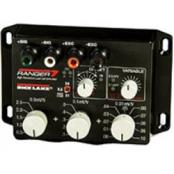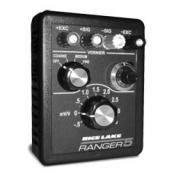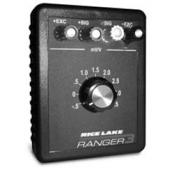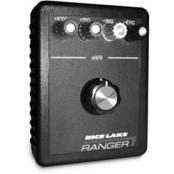Happy New Year!





• Dampness, water, or other contaminants on the face of the simulator can cause leakage current between
terminals. Keep the face and the terminals clean and dry when using the Ranger Series simulator.
• The binding posts are heavily plated, but should some corrosion occur, clean the posts before attempting to
use the unit.
• If the simulator has been at an unusual temperature environment for many hours (i.e., left in a truck during
winter or summer), allow several minutes for the unit to stabilize to the ambient temperature of the scale
before using.
• Excitation voltage should not exceed 15 volts DC or AC (RMS). Higher voltages will degrade the accuracy
and possibly damage your simulator.
If you’ve ever scratched your head trying to pick the right load cell simulator, you’ll notice that some models use a fixed rotary switch while others employ a Vernier knob. The differences come down to how precisely you need to dial in your simulated signal and how much versatility you require for your troubleshooting or calibration tasks.
Fixed Rotary Switch Simulators (Ranger 5 & Ranger 3)
These simulators are all about simplicity and repeatability. They typically let you select from a set of fixed output steps—think “click” and you’re instantly at 0, 1, or 2 mV/V, for example. If you want to quickly verify that an indicator responds correctly at known points, or if you’re doing routine diagnostic tests, rotary switch simulators are efficient and straightforward. Their main advantages are speed and reliability—set the switch, and you know exactly what you’re feeding into your indicator every time.
Vernier Knob Simulators (Ranger 7 & Ranger 1)
On the other hand, simulators with a Vernier knob are made for precision tinkerers and advanced calibration. Instead of jumping from one preset value to the next, you can gradually dial in a specific output—right down to fine increments. This makes Vernier knob models ideal for situations where you need to closely simulate tiny changes in load, fine-tune an instrument, or troubleshoot complex issues that demand more than just basic on/off checks.
Choosing the Right Tool:
In short, both types get the job done, but choosing the right one depends on whether your priority is simplicity and speed or precision and adjustability.
For those working with setpoint and batching simulation, there are simulator options like Transducer Simulator 4 designed to accurately replicate diverse load cell conditions. These transducer simulators let you emulate everything from simple static weights to dynamic batching scenarios, making them invaluable for testing and calibrating indicators that rely on specific output ranges.
Popular models provide adjustable output settings and easy fine-tuning, ensuring compatibility with a broad spectrum of electronic weight indicators. This makes them well-suited for simulating the demands of automated batching systems, as well as more straightforward setpoint checks during routine maintenance or initial setup.
